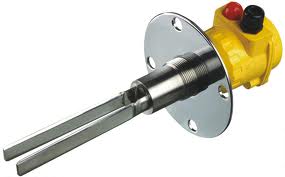Vibrating Forks
Vibrating Fork is an acoustic resonator in the form of a two pronged fork with the prongs (tines) formed from a U-shaped bar of elastic metal (usually steel). It resonates at a specific constant pitch when set vibrating by striking it against a surface or with an object, and emits a pure musical tone after waiting a moment to allow some high overtones to die out. The pitch that a particular tuning fork generates depends on the length of the two prongs. Its main use is as a standard of pitch to tune other musical instruments.The tuning fork was invented in 1711 by British musician John Shore, Sergeant Trumpeter and Lutenist to the court.
Uses
Forks have traditionally been used to tune musical instruments, although electronic tuners are replacing them in many applications. Tuning forks can be driven electrically, by placing electromagnets close to the prongs that are attached to an electronic oscillator circuit, so that their sound does not die out.
In musical instruments
A number of keyboard musical instruments using constructions similar to tuning forks have been made, the most popular of them being the Rhodes piano, which has hammers hitting constructions working on the same principle as tuning forks and uses electric amplification of the generated sound. The earlier, unamplified dulcitone used tuning forks directly; it suffered from faintness of volume.
In clocks and watches
The Accutron, an electromechanical watch developed by Max Hetzel and manufactured by Bulova beginning in 1960, used a 360 hertz steel tuning fork powered by a battery as its timekeeping element. The fork allowed it to achieve greater accuracy than conventional balance wheel watches. The humming sound of the tuning fork could be heard when the watch was held to the ear.Most of today's quartz clocks and watches use 32,768 Hz quartz tuning forks for timekeeping.
Medical and scientific uses
An alternative to the usual A440 diatonic scale is that of philosophical or scientific pitch with standard pitch of C512. According to Rayleigh, the scale was used by physicists and acoustic instrument makers.The tuning fork that John Shore gave to Handel gives a pitch of C512.
Tuning forks, usually C512, are used by medical practitioners to assess a patient's hearing. Lower-pitched ones (usually C128) are also used to check vibration sense as part of the examination of the peripheral nervous system. Tuning forks also play a role in several alternative medicine modalities, such as sonopuncture and polarity therapy.
Radar gun calibration
A radar gun, typically used for measuring the speed of cars or balls in sports, is usually calibrated with tuning forks.Instead of the frequency, these forks are labeled with the calibration speed and radar band for which they are calibrated.
In gyroscopes
Doubled and H-type of tuning forks are used for tactical-grade Vibrating Structure Gyroscopes like Quapason TM and different types of MEMS.
